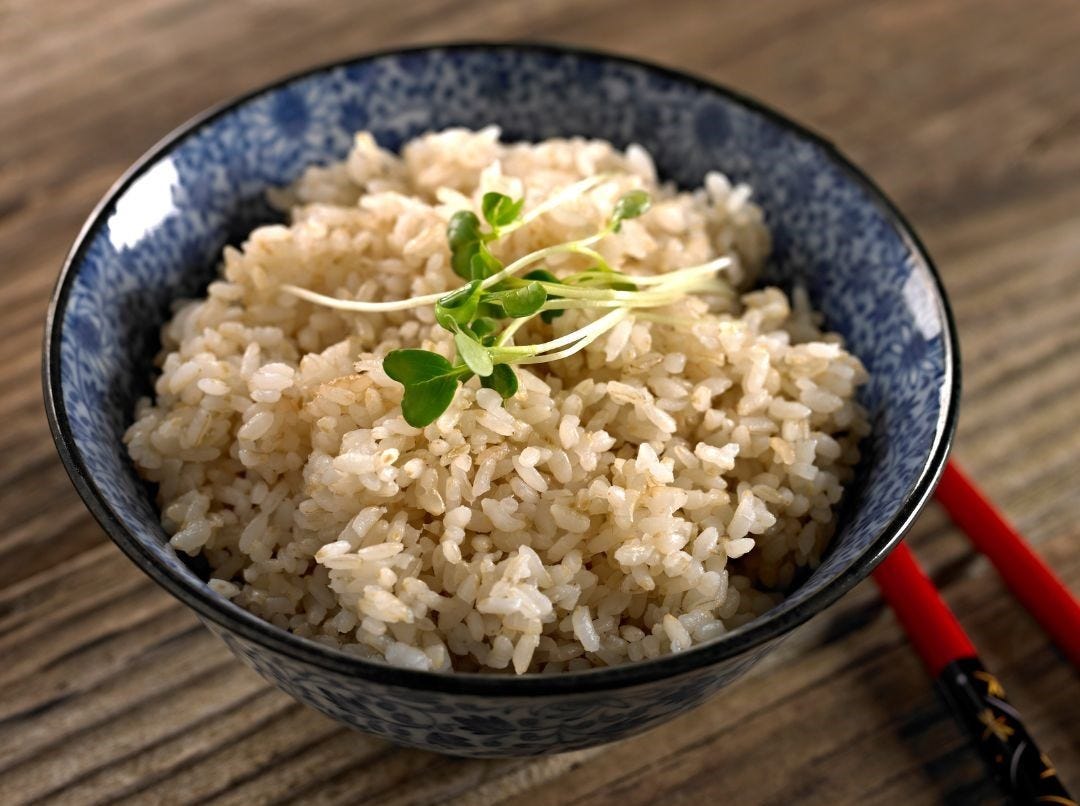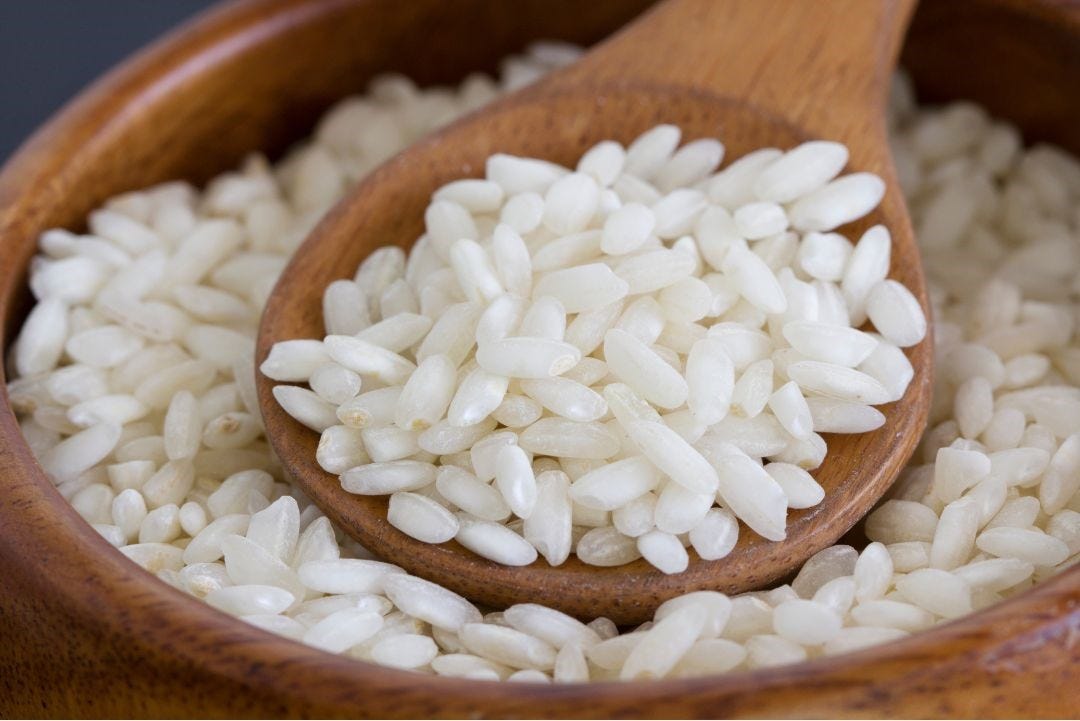Rice: A Pantry Staple and Menu Workhorse
A few basic tips + 6 nutritious varieties that can add interest to your menus.
Did you know that there are over 40,000 varieties of rice?
Rice is a versatile, nutritious pantry staple used in many cultures and types of cuisine. And, since rice is naturally gluten-free, it is a solid choice for those with celiac disease or gluten sensitivity. While basic white rice continues to occupy most of grocery store shelves, other less processed varieties are edging their way in and making themselves comfortable.
USES
Each type of rice has its own taste, texture, and nutritional makeup. Some easily absorb the flavors present in the dish, while others supply a hint of nuttiness or a floral aroma.
Texture depends largely on whether the grain is long, medium, or short.
Long-grain rice typically cooks up light, fluffy, and with drier, separate grains. It is a great choice for rice pilaf, as a base for curries and stir-fries, or as part of a side dish or salad.
Medium-grain rice is tender, moister, and slightly starchier, lending itself nicely to paella, risotto, side dishes, and rice pudding.
Short-grain rice is the softest and generally has the most starch which causes it to bind together. Use short-grain rice when stickiness is desired such as for sushi, rice balls, rice pudding, and poke bowls.
Compared to other rice varieties, basic white rice lacks nutrient value because of processing. While it is traditional to the dishes of many cultures, there are better nutritional options. For those with digestive issues, enriched white rice is a good choice because it provides nutrients while being easier to digest. Brown rice is known to retain more nutrients than basic white rice because the hull, bran, and germ remain intact after processing. Black and red rice offer high nutrient value bringing them up to “superfood” status.
RINSING
A common question is whether rice should be rinsed before cooking. The short answer is yes and no.
YES: basic white rice, brown rice, basmati, jasmine, and other long-grain options
Rinsing these types of uncooked grains under cool water removes any excess starch, dust or other particles that may be present. Rinsing also helps firmer, dry grains begin to open to absorb moisture, improving the texture once cooked.
NO: enriched rice and softer, starchier grains like Arborio, Bomba, or short-grain glutinous varieties
If enriched rice is rinsed, the added nutrients will be removed before cooking. When using starchy rice, such as Arborio, the component that aids the dish in becoming creamy will be washed away if rinsed before cooking.
SOAKING
Most varieties of rice do not require soaking before cooking. However, people with certain digestive issues may find soaking firmer, whole grains beneficial. Soaking shortens cooking time, can reduce active lectins, and aids digestion.
Some brands of black and red rice are pre-soaked to shorten cooking time. Check the package label for prep and cooking instructions.
COOKING
Rice can be cooked on the stovetop, in a rice cooker, multi-cooker, microwave, or oven. The amount of liquid and cooking time will vary depending on the type of rice, grain length, and application. Cooking liquid may be plain water, meat or vegetable stock or broth, dairy or plant milk, or a combination. Herbs and spices can be added to the cooking liquid to flavor the rice.
Learn the basic “pilaf” method of cooking rice on the stovetop HERE.
6 FAVORITE CHOICES
While we are not even scratching the surface of the 40,000+ varieties, stocking the pantry with nutritious, flavorful, and interesting options is getting easier. Here are six of my favorites found in US grocery stores, ethnic or specialty food stores, and online sources.
Brown Rice
Grain: long
Characteristics: firm texture; mild nutty flavor
Nutrition: protein, fiber, vitamin B6, magnesium, iron, potassium; low glycemic index
Rinse: yes
Cook: use 2 parts liquid to 1 part rice
Use: in bowls, side dishes, skillets, casseroles, soups, salads, stuffing, fried rice, or with stews, curries, stir-fries
Brown Basmati Rice
Grain: long
Characteristics: separate, dry texture; slightly nutty aroma and flavor
Nutrition: protein, fiber, calcium, iron, niacin, thiamine; easy to digest; low glycemic index
Rinse: yes
Cook: use 2 parts liquid to 1 part rice
Use: in bowls, pilaf, biryani, side dish, salads, casseroles, fried rice, or with dal, curry, stew
Brown Jasmine Rice
Grain: long
Characteristics: moist, soft texture; floral, aromatic, slightly nutty
Nutrition: protein, fiber, vitamin B6, magnesium, iron, phosphorus, zinc, manganese, selenium; low glycemic index
Rinse: yes
Cook: use 1 3/4 parts liquid to 1 part rice
Use: in side dishes, rice pudding, or with curries, stir-fries
Arborio Rice
Grain: medium or short
Characteristics: starchy, soft, creamy texture; absorbs flavors from what it is cooked in
Nutrition: protein, fiber, vitamins A and C, iron, medium glycemic index
Rinse: no
Cook: use the liquid and rice amounts noted in the recipes
Use: in risotto, rice pudding, paella, soup, rice balls, rice pancakes, frittatas
Black Rice (also known as Purple Rice or Forbidden Rice; different from Black Sticky Rice or Wild Rice)
Grain: long, medium, or short
Characteristics: soft texture; mildly nutty, earthy flavor
Nutrition: protein, high in fiber, many vitamins and minerals, antioxidants; low glycemic index
Rinse: yes
Cook: may require presoaking; follow prep and cooking instructions for the specific brand
Use: in bowls, rice pudding, rice cakes, soup, salads, side dishes, or with stir-fries
Red Rice (also known as Himalayan or Bhutanese Rice)
Grain: long, medium, or short
Characteristics: firmer texture; slightly nutty, earthy flavor
Nutrition: protein, high in fiber, several vitamins and minerals, antioxidants, medium glycemic index
Rinse: yes
Cook: may require presoaking; follow prep and cooking instructions for the specific brand
Use: in bowls, rice cakes, soup, salads, side dishes, fried rice, or with stir-fries
BONUS
Would you like to have information on these six varieties easily accessible? Download this free CHART.







